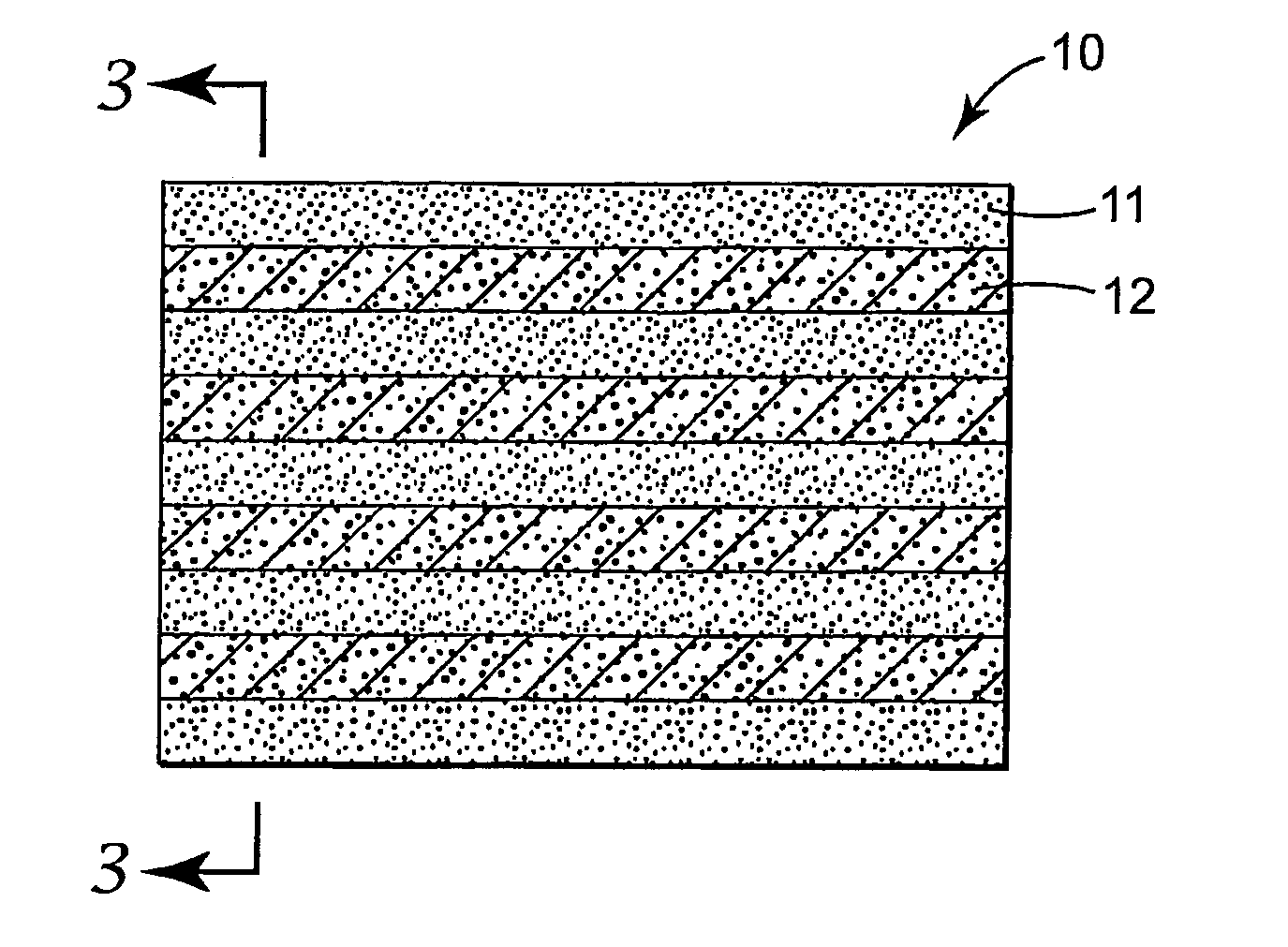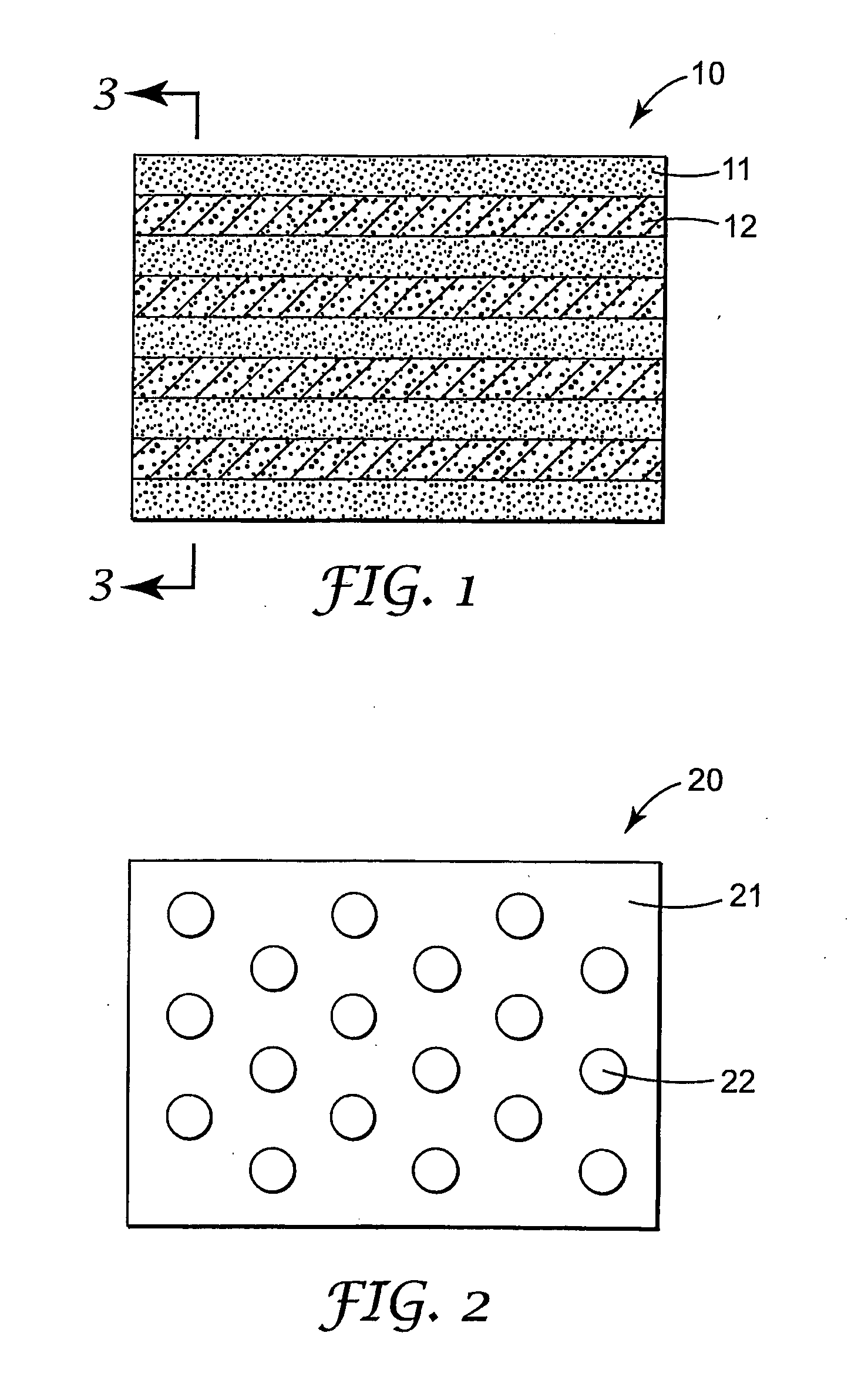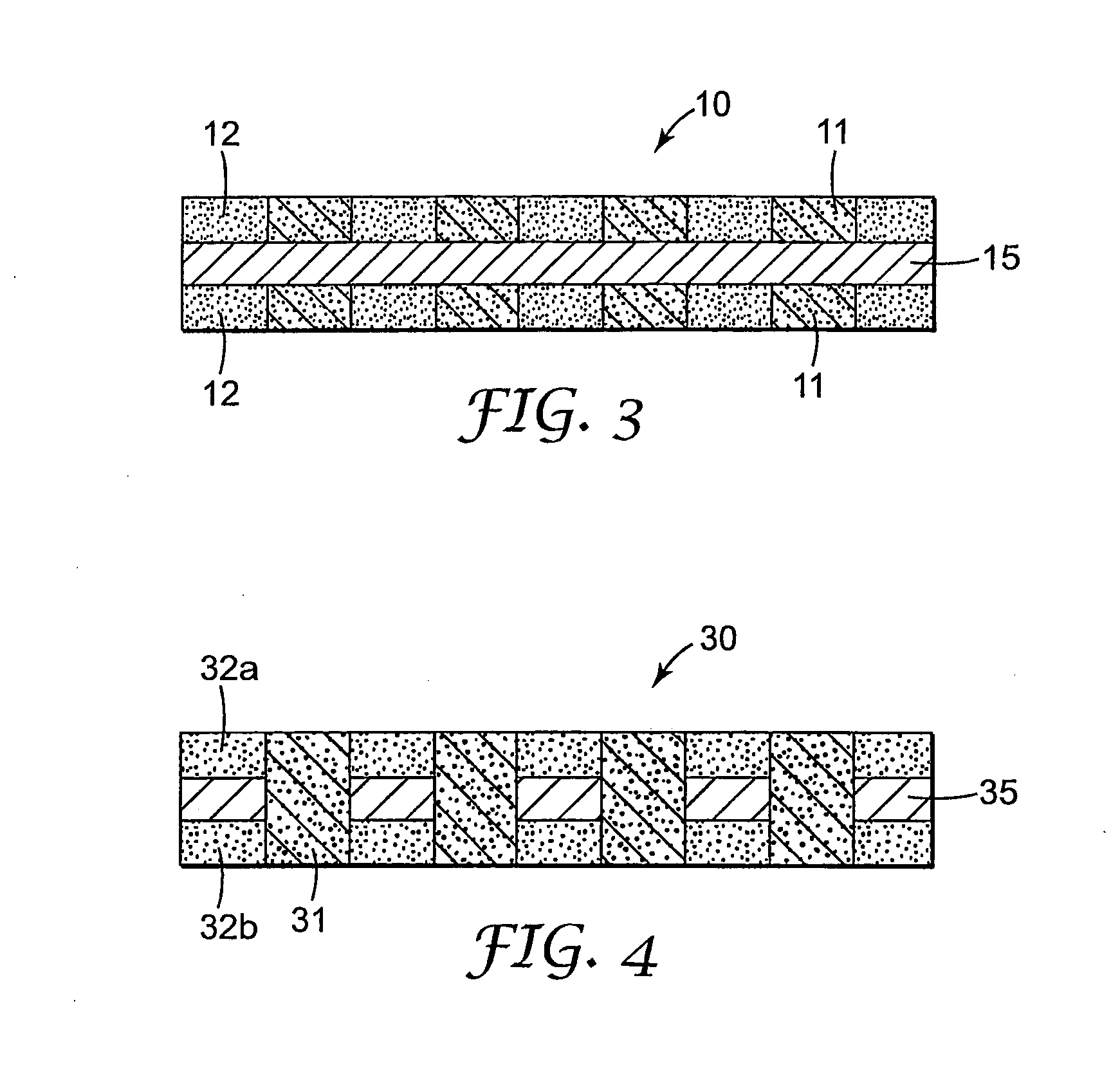Adhesive Tape For Structural Bonding
a technology of structural adhesives and adhesive tapes, applied in the direction of adhesive types, film/foil adhesives, transportation and packaging, etc., can solve the problems of no or limited adhesive properties in the uncured state, the bond formed by structural adhesives cannot be reversed or broken without damaging one or the other substrate, and remains to be solved. , to achieve the effect of excellent bond strength and improved impact resistan
- Summary
- Abstract
- Description
- Claims
- Application Information
AI Technical Summary
Benefits of technology
Problems solved by technology
Method used
Image
Examples
example 1
[0134]A 1 meter wide web of acrylic pressure-sensitive adhesive (PSA) transfer tape having a thickness of 0.25 mm, commercially available as VHB 9473 from 3M Company (St. Paul, Minn. / USA), was placed between two non-perforated siliconized paper liners (an upper liner and a lower liner). The sheet thus prepared was scored with a rotary die cutting process so as to provide multiple cuts in a down-web direction to a depth such the upper liner and the transfer tape were severed completely and only the lower liner remained intact. The down-web cuts were provided at intervals of 6.4 mm (¼ inch).
[0135]Every second PSA strip (and its associated upper liner) was then removed and discarded. A non-perforated lower liner remained bearing 6.4 mm (¼ inch) wide strips of PSA tape spaced 6.4 mm (¼ inch) apart. Each remaining PSA strip was protected on its upper surface by a remaining strip of upper liner having the same dimensions as the upper surface of the PSA strip.
[0136]The web then was passed ...
example 2
[0141]Example was repeated with the exception that an alternate version of acrylic pressure-sensitive adhesive tape was employed: VHB 4910, a pressure-sensitive adhesive tape from 3M Company, St. Paul, and MN / USA.
[0142]The resulting striped adhesive composite had a thickness of ca. 1100 μm (40-45 mils). The portion of the web surface area comprising PSA was 50% and the structural adhesive comprised 40%.
[0143]Test results are summarized in Table 2.
example 3
[0144]Example was repeated with the exception that an alternate version of acrylic pressure-sensitive adhesive tape was employed: VHB 4950, pressure sensitive adhesive foam tape from 3M Company, St. Paul, and MN / USA.
[0145]The tape composite had a thickness of ca. 1180 μm (45-48 mils). The portion of the web surface area comprising PSA was 50% and the structural adhesive comprised 50%. Test results are summarized in Table 2
PUM
| Property | Measurement | Unit |
|---|---|---|
| bond strengths | aaaaa | aaaaa |
| bond strengths | aaaaa | aaaaa |
| shear strengths | aaaaa | aaaaa |
Abstract
Description
Claims
Application Information
 Login to View More
Login to View More - R&D
- Intellectual Property
- Life Sciences
- Materials
- Tech Scout
- Unparalleled Data Quality
- Higher Quality Content
- 60% Fewer Hallucinations
Browse by: Latest US Patents, China's latest patents, Technical Efficacy Thesaurus, Application Domain, Technology Topic, Popular Technical Reports.
© 2025 PatSnap. All rights reserved.Legal|Privacy policy|Modern Slavery Act Transparency Statement|Sitemap|About US| Contact US: help@patsnap.com



